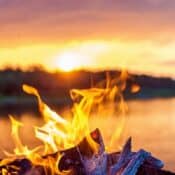
Visit Galilee, Israel: Discover the Sea of Galilee and Lake Kinneret
Explore Israel’s largest freshwater lake, the Sea of Galilee, also known as Lake Tiberias or Lake Kinneret. This lake is famously linked with the biblical story of Jesus walking on water. According to the Bible, Jesus conducted much of his ministry around this lake, making it a key Christian pilgrimage site today. Moreover, the lake serves as one of Israel’s primary water sources and is a popular destination for relaxing on its beaches, cycling, or walking. Additionally, many biblical sites are scattered throughout the region, alongside Israel’s first kibbutz, which makes it an ideal place to learn about the history of the region and its people.
Jesus first met Peter
Believed to be the location where Jesus first met his disciples—Peter, Andrew, James, John, and Matthew—Capernaum is a significant biblical site. Here in Galilee, Israel, you can visit the well-preserved remains of a 4th-century synagogue, built from white limestone, which sits above the ruins of an earlier Roman synagogue. Around it, the ruins of a village are thought to be where Simon Peter, a humble fisherman later beatified as Saint Peter, lived. Jesus is said to have stayed with him here, and a modern church, with a glass viewing panel in the floor, extends over his house and the ruins of a 5th-century church that surround it.
Benedictine church, Galilee, Israel
At Tabgha, on the northwestern shore of the lake, you will find the Church of the Multiplication of the Loaves and Fishes. This Benedictine church, built in 1982, protects the remains of a 5th-century church, its 4th-century mosaic floor, and the earlier foundations of a 3rd-century church. Central to the church is a rock protruding from the floor below the altar, believed to be where Jesus laid the five loaves and two fishes that fed 5,000 people.
Nearby, the Church of the Primacy of Saint Peter, a Franciscan chapel built in 1933, features vivid stained-glass windows. In front of the altar, another rock is believed to be where Jesus sat and ate with his disciples.
Uphill from Tabgha’s Church of the Multiplication of the Loaves and Fishes is the Mount of the Beatitudes. This location is believed to be where Jesus delivered the Sermon on the Mount. Here, an octagonal Italianate church, built in the early 20th century, marks the spot. Stained glass below the dome depicts the beatitudes, with seven virtues (faith, hope, charity, fortitude, justice, temperance, and prudence) illustrated around the altar. Don’t miss the sweeping views of the Sea of Galilee from the balcony and the tranquil gardens.
Deganya Beth kibbutz, Galilee, Israel
At the southern end of the lake, you will find Deganya Alef and Deganya Beth kibbutzim. Deganya Alef was Israel’s first collective farm, founded in 1910 by a group of young people eager to create a just society. The success of this kibbutz led to the establishment of countless others across the country, including Deganya Bet in 1920.
You can visit Deganya Bet to gain insight into the history and present-day reality of kibbutz life. A guide from the kibbutz will explain the theoretical foundations of the kibbutz movement and the important role kibbutzim played in the early state of Israel’s history and defense. Additionally, they will discuss what life is like on a kibbutz today and the challenges faced by modern life. As part of the tour, you will see the archives, located in the converted home of Levi Eshkol, a former Prime Minister of Israel, which contain fascinating material on the early days of the pioneer movement.
They will also speak about what life is like on a kibbutz today and current challenges faced by modern life. As part of the tour you’ll see the archives, located in the converted home of Levi Eshkol, a former prime minister of Israel, that contain fascinating material on the early days of the pioneer movement.
Best time to visit Galilee, Israel
Although Galilee is considered a year-round destination, the best times to visit are April or May and between September and November. During these periods, you will avoid the heat and humidity of the summer months. Winters, while cool and occasionally wet, are often the most tranquil time to visit rural Israel.
Source: Audley Travel





